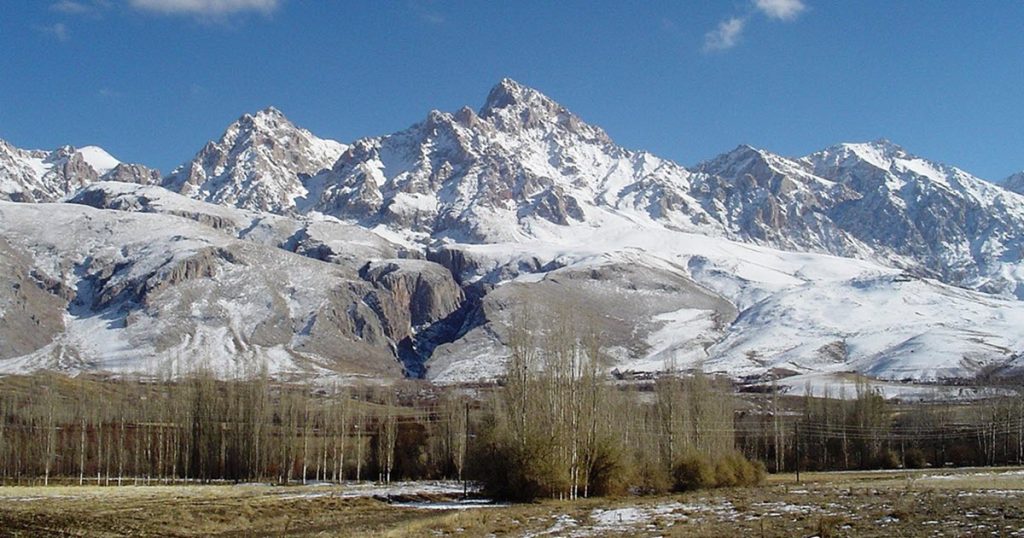The Taurus Mountains, or Toros Dağları as they are known locally, form a majestic mountain range that spans the southern parts of Turkey. A geological wonder, these mountains stand as a testament to the age-old processes that have shaped our planet. This article will dive into the geological, ecological, and cultural significance of the Taurus Mountains.

Geological Intricacies of the Taurus Mountains
The Taurus Mountains extend over 500 kilometers, parallel to Turkey’s Mediterranean coastline. Formed approximately 65 million years ago during the Alpine Orogeny, the range’s varied geology exhibits the fascinating interplay of tectonic processes.
The range is predominantly comprised of limestone, with a noticeable presence of marble, serpentine, and basalt. This geological diversity is an underpinning factor of the region’s rich biodiversity, providing habitats for a wide array of flora and fauna.
Biodiversity in the Taurus Mountains
The varied topography and climate of the Taurus range have resulted in an incredible mosaic of habitats. The range hosts multiple ecoregions, including Mediterranean conifer and mixed forests, Aegean and Western Turkey sclerophyllous and mixed forests, and Eastern Mediterranean conifer-sclerophyllous-broadleaf forests.
Flora in the region includes several endemic species that are unique to the Taurus Mountains. Notable among these are the Taurus Fir (Abies cilicica) and the rare Cedar of Lebanon (Cedrus libani), which stand as relics of a time when these mountains were covered in vast, primeval forests.
Among the fauna, large mammals such as the Eurasian lynx, wild goat, and the Anatolian leopard – though now possibly extinct – were historically recorded here. The mountains also serve as important migration routes for many bird species, creating a haven for bird watchers and nature enthusiasts.
Water Resources and Hydroelectric Power
The Taurus Mountains are a significant source of water for the surrounding regions, with many rivers, including the Ceyhan and Seyhan, having their source here. These waterways provide vital resources for agriculture, especially within the fertile plains of Cilicia.
Moreover, these rivers have been harnessed for hydroelectric power, playing a pivotal role in Turkey’s energy production. Dams such as the Keban, Atatürk, and Karakaya, although not directly in the Taurus range, are part of the extensive hydroelectric network fed by Taurus-sourced rivers.
Cultural Significance and Human History
The human history of the Taurus Mountains stretches back thousands of years. The mountains have been home to various civilizations, including the Hittites, Romans, Byzantines, and Seljuks, each leaving their unique imprint on the region.
Ancient roads and trade routes, such as the famed King’s Highway, wound through these mountains, facilitating the exchange of goods and ideas between different cultures. Today, several archaeological sites and ancient ruins, including the Roman Cilician Gates and the Hittite city of Karatepe, provide glimpses into the area’s storied past.
Modern Day Taurus: Tourism and Recreation
In modern times, the Taurus Mountains have become a destination for adventurous tourists and locals seeking recreational opportunities. Hiking, mountaineering, and paragliding are popular activities, with the Lycian Way and Saint Paul Trail being two of the most renowned hiking routes.
Winter sports also attract visitors to the range. Ski resorts such as Saklıkent, near Antalya, and Davraz, near Isparta, provide opportunities for skiing, snowboarding, and snowshoeing during the winter months.
From the vantage point of their snow-capped peaks to their deep, verdant valleys, the Taurus Mountains remain a place of adventure and discovery. A journey through these mountains is truly a journey through time – a journey that showcases the intricate dance between the shaping forces of our planet and the myriad life forms that inhabit it, humans included.